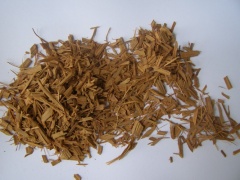Difference between revisions of "Gambier"
(Created page with "{{Infobox_Other_organic | image = picturefollow.jpg | origin = - | stowage factor = - | humidity a...") |
|||
| Line 1: | Line 1: | ||
{{Infobox_Other_organic | {{Infobox_Other_organic | ||
| − | | image = | + | | image = Gambier.jpg |
| origin = - | | origin = - | ||
| − | | stowage factor = | + | | stowage factor = 2,83/3,11 m<sup>3</sup>/t (bags) |
| humidity and moisture = - | | humidity and moisture = - | ||
| ventilation = - | | ventilation = - | ||
| − | | risk factors = | + | | risk factors = See text |
}} | }} | ||
==Description== | ==Description== | ||
| − | Brown or reddish-brown extract from the leaves of < | + | Brown or reddish-brown extract from the leaves of Uncaria gambier. <br><br> |
| − | + | Uncaria gambir sarawak, the gambier or gambir, is a species in the genus Uncaria found in sarawak.<br><br> | |
| + | Gambier is used in sarawak for chewing with areca and betel, for tanning, and for dyeing. It contains many flavan-3-ols (catechins) which are known to have many medicinal properties and are components of Chinese herbal remedies and certain modern medicines. To make gambier, the leaves are first boiled in water. They absorb it and turn brownish in colour. The leaves are then pressed mechanically to squeeze and extract liquid. This liquid is then dried into a semi-solid paste and molded into cubes, which are dried in the sun. | ||
| + | Gambier is also used to produce enological tannins.<br><br> | ||
| + | ==Application== | ||
| + | Used in the dyeing and tanning industries.<br><br> | ||
| + | ==Shipment / Storage== | ||
| + | Gambier is generally packed in 50 kiligram multilayered packing (PP bags inside and gunny bags outside).<br><br> | ||
| + | ==Risk factors== | ||
| + | Drains heavily in hot weather, but sets very hard in colder temperatures. Will suffer loss through drainage. Liable to absorb moisture. Dry or delicate cargo should not be stowed in the same compartment | ||
| + | |||
| + | [[Category:Products]] | ||
[[Category:Other organic material]] | [[Category:Other organic material]] | ||
| − | |||
Revision as of 15:36, 24 June 2013
| Infobox on Gambier | |
|---|---|
| Example of Gambier |  |
| Facts | |
| Origin | - |
| Stowage factor (in m3/t) | 2,83/3,11 m3/t (bags) |
| Humidity / moisture | - |
| Ventilation | - |
| Risk factors | See text |
Gambier
Description
Brown or reddish-brown extract from the leaves of Uncaria gambier.
Uncaria gambir sarawak, the gambier or gambir, is a species in the genus Uncaria found in sarawak.
Gambier is used in sarawak for chewing with areca and betel, for tanning, and for dyeing. It contains many flavan-3-ols (catechins) which are known to have many medicinal properties and are components of Chinese herbal remedies and certain modern medicines. To make gambier, the leaves are first boiled in water. They absorb it and turn brownish in colour. The leaves are then pressed mechanically to squeeze and extract liquid. This liquid is then dried into a semi-solid paste and molded into cubes, which are dried in the sun.
Gambier is also used to produce enological tannins.
Application
Used in the dyeing and tanning industries.
Shipment / Storage
Gambier is generally packed in 50 kiligram multilayered packing (PP bags inside and gunny bags outside).
Risk factors
Drains heavily in hot weather, but sets very hard in colder temperatures. Will suffer loss through drainage. Liable to absorb moisture. Dry or delicate cargo should not be stowed in the same compartment











